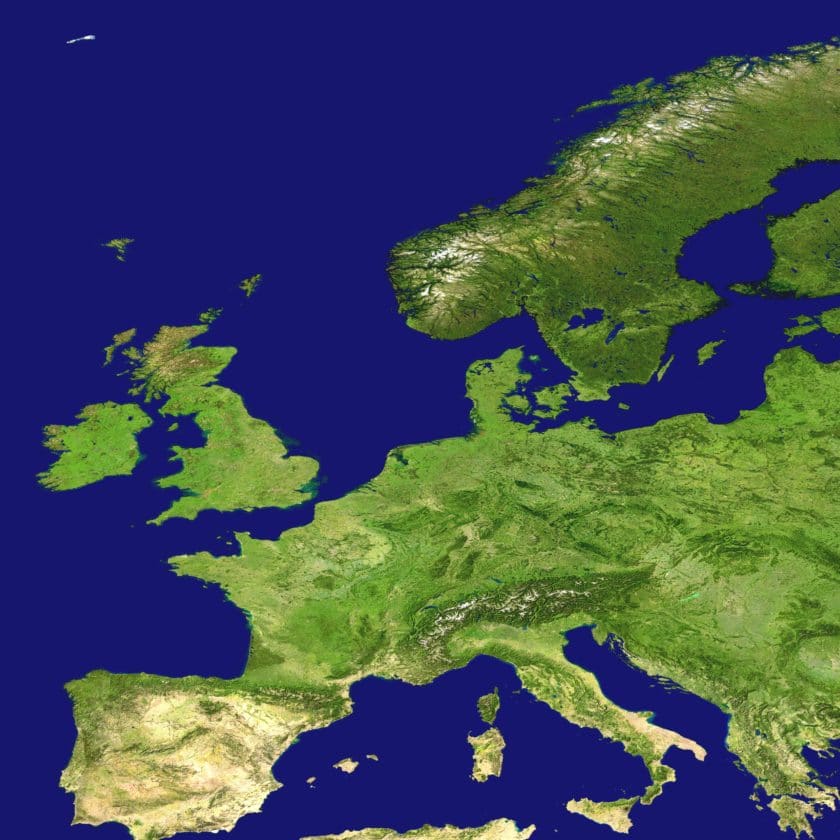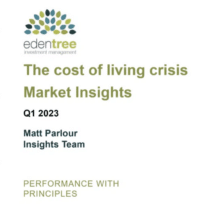What next for the UK and Europe after a summer like no other? Frédérique Carrier, head of Investment Strategy in the British Isles and Asia at RBC Wealth Management, takes a view
Amid scorching temperatures, three key events that will likely shape the regional economic outlook have marked the summer of 2022 so far: the contest to become the next UK prime minister; the EU plan to avoid winter energy shortages; and the collapse of the Italian government. We explore the potential outcomes, and suggest portfolio positioning.
UK leadership contest
Following the resignation of Prime Minister Boris Johnson, 180,000 Conservative Party members will choose their next leader. The winner, to be announced on Sept. 5, will automatically become the next prime minister of the UK. The leadership contest has now narrowed to two candidates—Foreign Secretary Liz Truss, the favourite to win according to polls, and former Chancellor of the Exchequer Rishi Sunak. Both candidates advocate fiscal easing to tackle the UK’s slow growth.
The next occupant of Number 10 Downing Street will face a very challenging economic backdrop. The Bank of England expects UK inflation to rise to 13 percent and remain above 10 percent for most of next year; it recently hiked interest rates by 50 basis points to 1.75 percent—the largest increase since 1995. The central bank estimates that the UK economy will contract in both 2023 and 2024, to the tune of 1.25 percent and 0.25 percent, respectively. Markets expect the Bank Rate to reach 2.85 percent at the end of 2022.
These projections could prove overly pessimistic if energy prices decline swiftly, or if the new prime minister’s fiscal response to the latest spike in gas prices and the cost of living crisis is significantly more substantial than the two candidates are suggesting at the moment.
Once in office, the new prime minister will likely be under pressure to act. The average household energy bill is set to increase to £3,358 a year in October, up from £1,400 a year ago, and rise again to £4,427 in April 2023, according to energy consultant Cornwall Insight. The situation is critical given the average household income was £25,971 in 2021, according to the Office of National Statistics.
VAT option
Because income tax cuts do not tend to help low-income households, further direct payments or broad cuts in the sales tax or the value-added tax (VAT) are likely, in our view. A decrease in VAT proved an effective tool during the great financial crisis. Such cuts are easy to implement, stimulate consumption, and are temporary. This could entail further action by the Bank of England if this additional fiscal stimulus proves inflationary—in the neighbourhood of 25 to 50 bps beyond current market expectations, depending on the depth of the recession.
The pound has shown little sensitivity to the political uncertainty from the Conservative leadership contest. However, both candidates are expected to press on with plans to water down the Northern Ireland Protocol, the post-Brexit trading arrangement for Northern Ireland, a move which could trigger a trade war with the EU. This would weigh on the pound in the medium to long term, in our view, as would Truss’s proposed review of the Bank of England’s inflation-targeting mandate should she have the opportunity to pursue it as prime minister. Such a review would likely reduce the incentive for the central bank to follow through on its hawkish rhetoric, even as inflation remains elevated.
EU preparation to avoid energy shortages
Despite reducing its dependence on Russian gas imports to 15 percent of total consumption compared to 40 percent last winter, the EU remains in a precarious position. Natural gas prices surged to more than €200 per megawatt-hour at the end of July—twice the average price during the first half of 2022, and close to ten times the average from 2015 to 2022—as Russia again reduced natural gas deliveries via the Nord Stream 1 pipeline to 20 percent of capacity. We estimate these additional energy costs could represent as much as of three percent of the bloc’s 2021 GDP.
In an effort to lessen the risk of shortages, the EU member states agreed to reduce gas consumption some 10 percent by March 2023. Participation in the plan, which allows for country-specific targets, is on a voluntary basis for now, but may become compulsory in the case of a region-wide emergency. Spain, for example, intends to reduce consumption by seven percent, and will require businesses to limit their heating and cooling (air conditioning set no lower than 27 C in summer and heating not to exceed 19 C this winter).
Many businesses are adapting, switching to other fuels, and substituting local production for imports where possible. For example, the CEO of German multinational chemical company BASF stated that the company could replace 15 percent of the natural gas used to generate electricity and steam with heating oil. And steel manufacturer ArcelorMittal is now buying metal inputs for one of its mills from a sister plant in Canada that has access to cheaper energy.
Reducing natural gas consumption today could reduce the risk of abrupt shutdowns during the winter, though the success of this effort will likely depend on both Russia’s gas export strategy and the severity of the season. If Russia maintains very low levels of gas deliveries, the EU will likely speed up its energy substitution and transition processes, weakening Russia’s leverage over the region.
The Italian job
Italy faces fresh elections on Sept. 25 following the resignation of centrist technocrat Prime Minister Mario Draghi. He had brought economic credibility to the country, pushing through reforms required for the country to receive €200 billion (five percent of GDP) from the EU’s COVID-19 recovery fund.
Opinion polls suggest a coalition of three right-wing parties, which largely share similar Eurosceptic and populist views, is likely. Tax cuts and more spending are being discussed. Such a policy course would swell the national debt load—already at 150 percent of GDP. Against the backdrop of rising interest rates, this prospect has alarmed investors; yield spreads, or the gap between the yields on Italian and German 10-year government bonds, widened before stabilising.
Despite the current rhetoric, we think the new government is likely to avoid a confrontation with Brussels and deliver necessary reforms in order to access EU rescue funds. The European Central Bank has been clear that it would not intervene should Italy plunge into a crisis of its own making due to a Eurosceptic government reneging on its commitments to the EU. The situation bears monitoring.
Portfolio positioning
Despite Europe being very exposed to the fallout from the Russia-Ukraine war, the European stock market has performed broadly in line with the S&P 500 in local terms so far this year. With the region’s economy slowing while the European Central Bank raises rates, the risk of policy error is not negligible. We would focus on opportunities linked to decarbonisation and the green economy, where the EU remains a leader.
As for the UK, with clouds continuing to gather on the horizon, we are focused on companies which generate the majority of their revenue abroad.

































